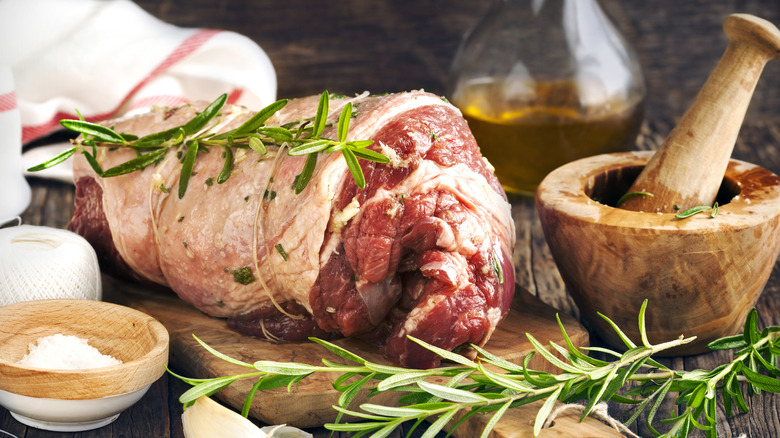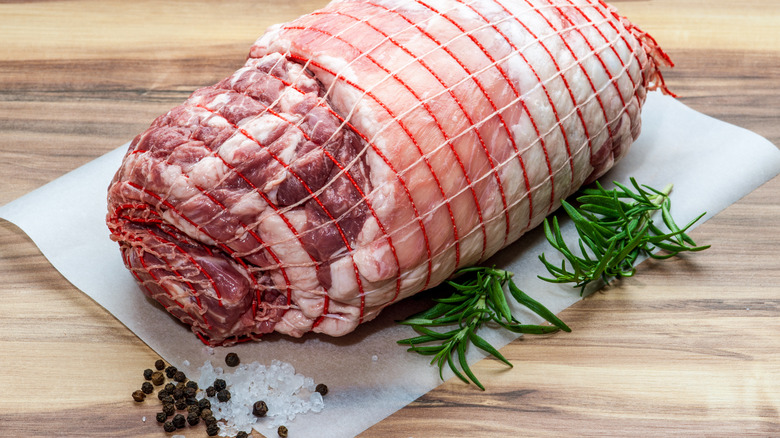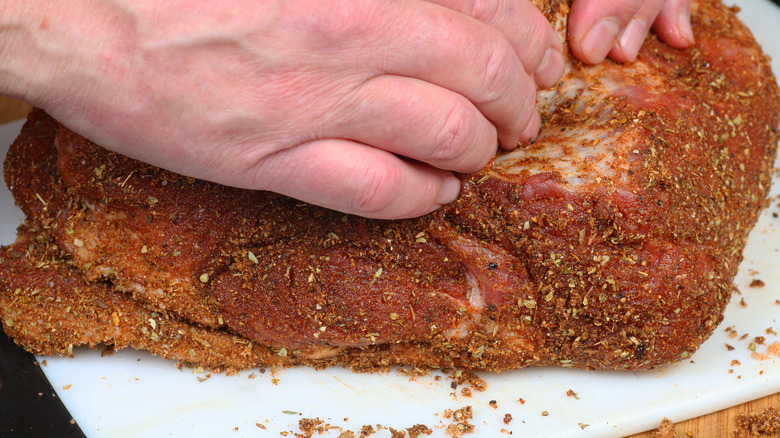Why It Pays To Debone A Leg Of Lamb
The cuts of lamb can vary, but the leg can prove to be one of the most impressive dishes. It's delicious, easy to prepare, loaded with flavor, and could be considered a "healthy meat" since it's grass-fed, mentions Epicurious. But lamb can often seem daunting. Week-night meals usually stray from large cuts of meat that look more like a cut from the Stone Age than your simple family pot roast. But, the argument for lamb is strong, and with a deboning knife, or better yet, your local butcher, you may find yourself serving leg of lamb on a weekly rotation.
Lamb is the second most consumed meat globally, yet America only consumes one pound per person yearly (via Epicurious). It's a shame, too, because a leg of lamb has multiple cuts on one bone — the shank and the sirloin, adding many more cooking options and flavor profiles, explains Serious Eats. A deboned leg of lamb boasts a quick cooking time and is receptive to myriad flavors.
Cut out the fat to reduce gaminess
One of the biggest complaints against lamb is the "gamey flavor" (via Utah Public Radio). Many diners shy away from the unique and pungent taste, especially since America is used to the milder flavors of beef, pork, and chicken, according to Wholey. However, if lamb is prepared correctly, the genuinely delicious flavor will come through, which is precisely why a deboned leg of lamb is so worth it, writes Serious Eats.
There are pockets of fat under the bone localized around intermuscular glands, and fat is what gives lamb that recognizable gamey flavor that many are averse to. Deboning and butterflying the lamb allows access to this fat, so you can remove it and make it easier to carve. Deboning lamb cuts the bone away from the meat, explains All Recipes. A butcher can easily cut away the bone, but most supermarkets sell them already prepared this way. Food 52 boasts that lamb sears better than steak, so if you decide to make it at home, leave some of the fat around the outside for a brown, crispy crust.
Season the lamb inside and out
The second reason to prepare lamb deboned is that there is more surface area to prepare with flavor. With the bone removed, you can season the lamb inside and out, writes Serious Eats. Bone-in lamb is flavorful, but the bone retains heat, making cooking the lamb with bone attached more time-consuming, difficult to cut for serving, and risky in testing to see if it's fully cooked, explains blogger Kevin Is Cooking.
Since the bone has been removed, add flavor by rubbing the lamb down with a dry rub, wet rub, or even simply salt and pepper for the purest taste. Rubbing the meat down with spices, salt, and aromatics like garlic adds complexity and draws out the sweet flavors of lamb, according to Spruce Eats. The Kitchn suggests skipping a marinade. Lamb is already tender meat, and since the purpose of a marinade is to break down protein to tenderize it, a marinade can actually toughen up lamb.
Do yourself a favor: Buy a deboned lamb, and you'll be set for a delicious meal.


